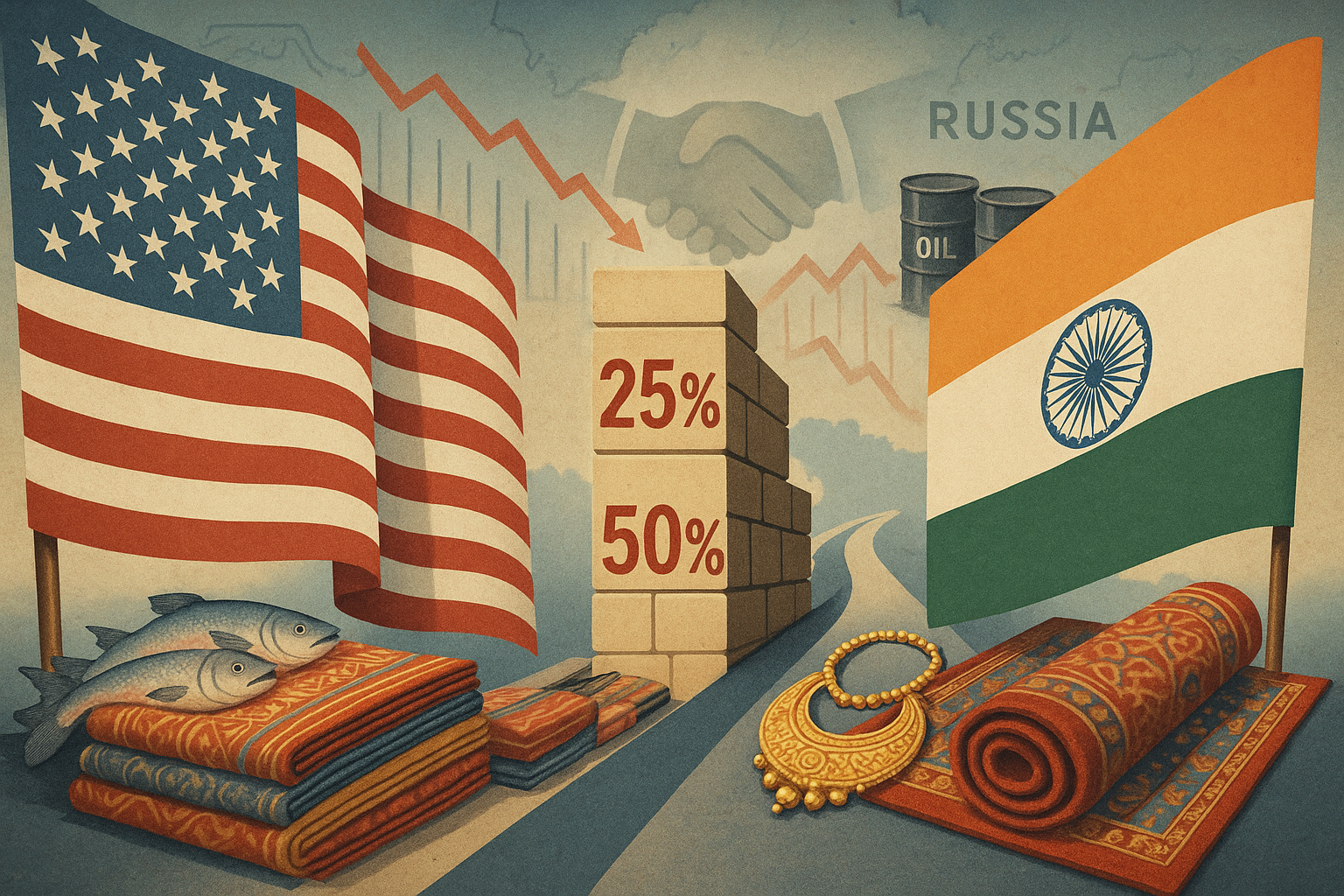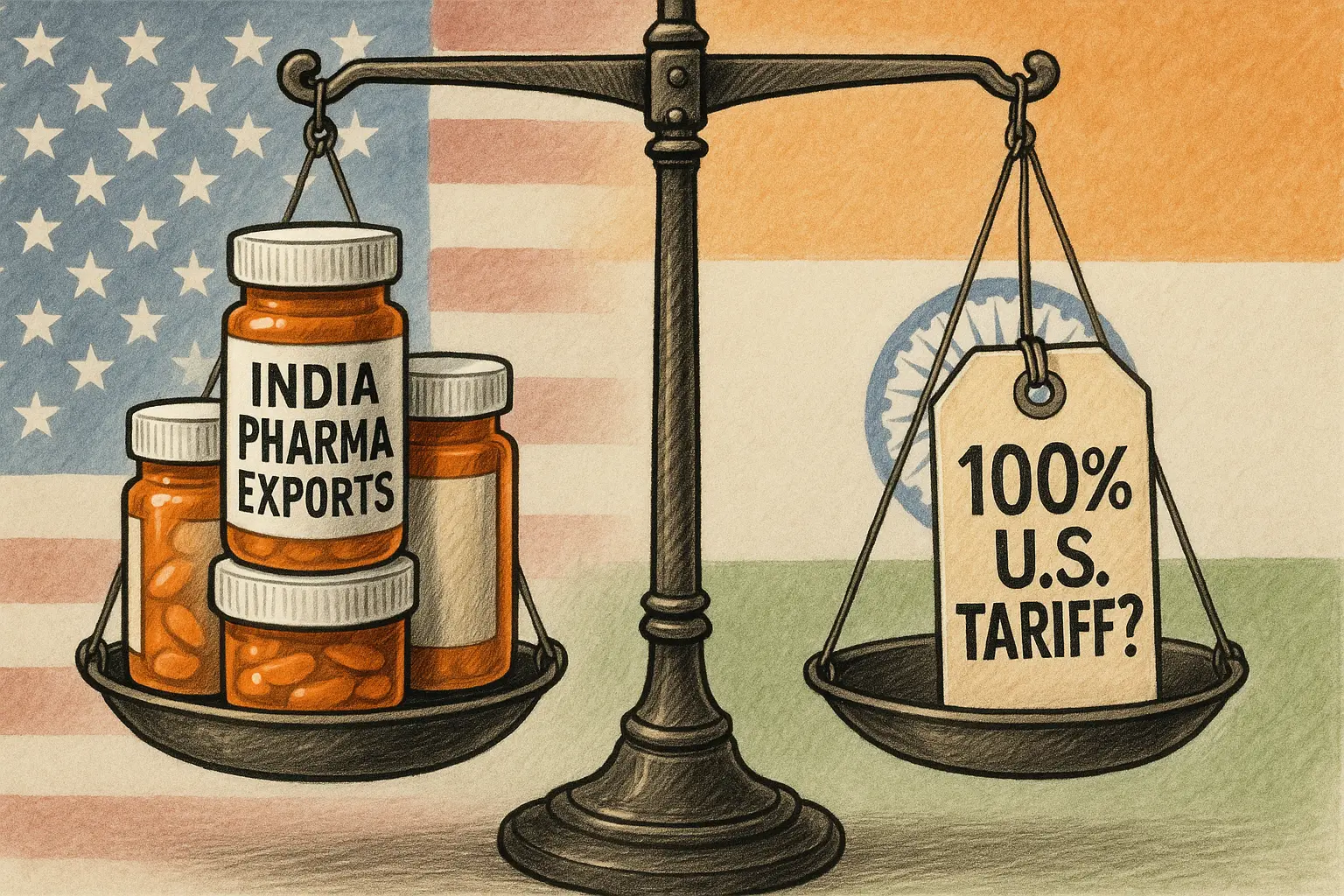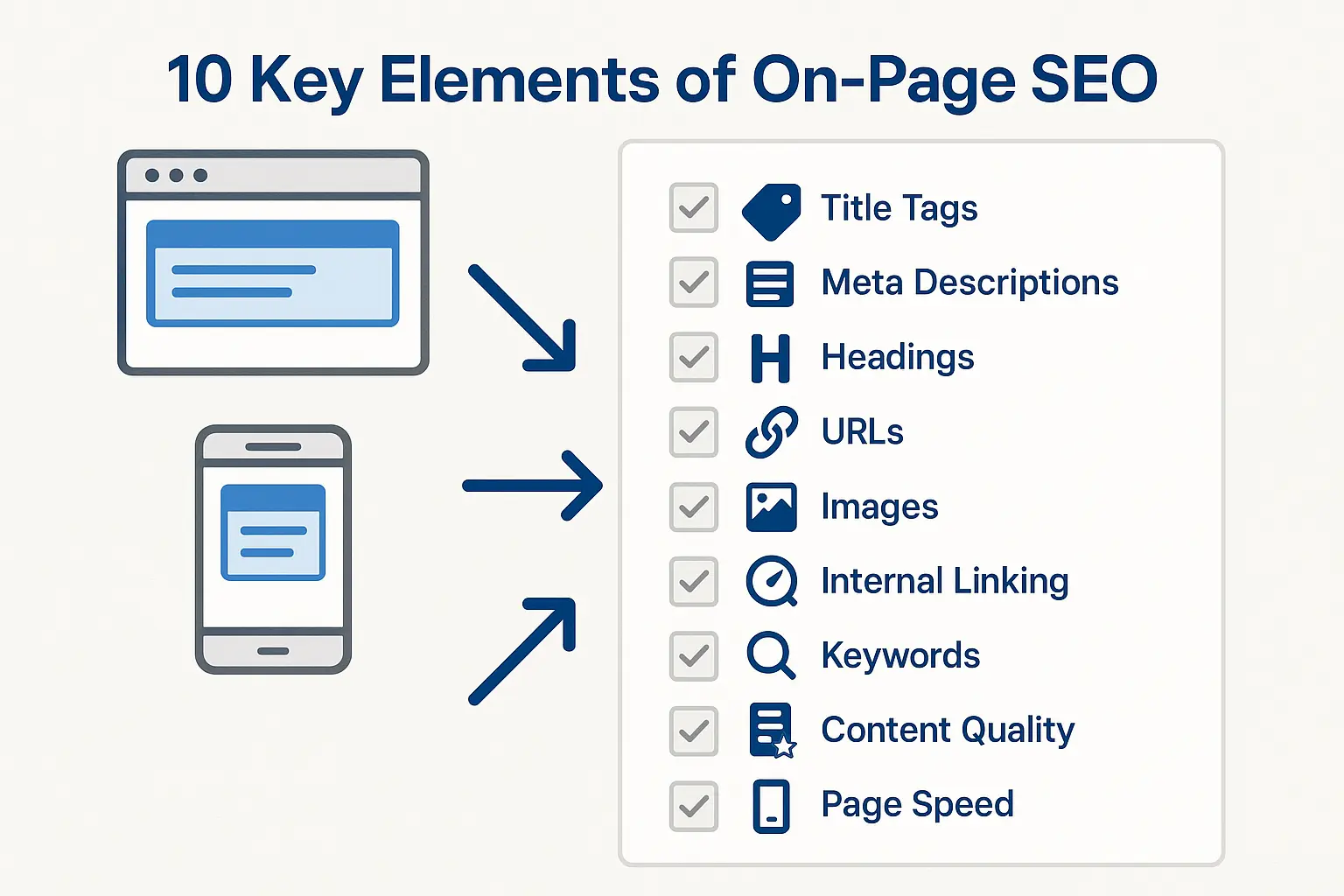U.S. Tariffs on Indian Imports: What It Really Means for India—and the World

Intro:
Imagine waking up to news that products made in India—from textiles and jewelry to seafood—just got twice as expensive in the U.S. For small businesses, exporters, and the Indian economy, this isn't just a trade decision—it’s a wake-up call. On August 7, the U.S. government under Trump will begin imposing a 25% tariff on Indian goods, with another 25% kicking in around August 27–28. Behind the headlines? A growing tension between two powerful allies—and a test of India’s strategic independence.
🔍 What Are These Tariffs and Why Are They Happening?
U.S. President Donald Trump has announced a 50% total tariff on Indian imports, blaming India’s continued purchase of Russian oil amid the Ukraine conflict. According to the U.S., India is profiting by refining and reselling this oil—something Washington sees as undermining global pressure on Russia.
India, on the other hand, argues it’s protecting its national interest and buying energy where it’s affordable. The Indian government called the tariffs “unreasonable” and said it will explore alternatives to the U.S. if the trade environment becomes hostile.
📉 What Sectors Are Hit Hardest?
Several of India’s key export sectors are seeing massive tariff hikes—some reaching over 60%:
- Textiles & Apparel: Around 60% tariff after full hike
- Jewelry, Diamonds, and Gold: Up to 52%
- Seafood: Heavily impacted, with exports worth ₹24,000 crore (~$3 billion) at risk
- Carpets and Chemicals: Also facing steep tariff increases
These sectors will likely lose their price advantage in the U.S. market, pushing American buyers to look elsewhere, like Vietnam or Mexico.
However, pharmaceuticals and electronics (including smartphones) are largely exempt. This shows the U.S. is still dependent on India for critical medical supplies and tech components.
📊 What’s the Impact on the Indian Economy?
The effects could ripple across the economy:
- India's GDP growth may drop by 0.3–0.5%, slipping below the expected 6% mark.
- Exporters will lose competitiveness in their biggest market.
- Small and medium businesses—especially in coastal states—could struggle to stay afloat.
- Government revenue from export taxes may also decline.
To manage the blow, India is preparing a ₹20,000 crore support plan for exporters and is reportedly considering a small reduction in Russian oil imports—but only if the U.S. offers better prices.
💥 U.S. Risks and Geopolitical Fallout
This move could backfire on the U.S., too.
- American consumers and businesses will face higher prices on goods like clothes, seafood, and jewelry.
- The loss of low-cost Indian imports may add pressure to already rising U.S. inflation.
- Strategically, the U.S. risks pushing India closer to Russia or into new alliances with countries like China, the UAE, or BRICS+.
A U.S. trade delegation is expected in Delhi later this month for possible negotiations. Some analysts believe that if inflation hurts American voters, Trump may be forced to scale back the tariffs.
✍️ Conclusion: The Price of Power
The next few weeks will be crucial—not just for exporters and businesses, but for India’s role in a shifting global order. Watch closely. Because in geopolitics, what happens in the background often shapes the headlines of tomorrow.









No comments yet. Be the first to comment!